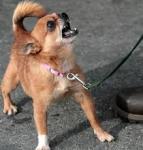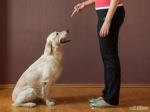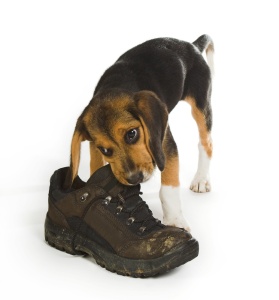Ok, so I was a little optimistic about Casey Puppy’s training plan for last week. He’s still doing fabulously given the whole new exciting world he’s found himself in, but I need to take another week to let him get even better about a few basics such leash pulling and not exploding the instant he sees something exciting to a dog.
He’s come a l-o-n-g way in just 2 short weeks. He’s about 80% of where I want him to be before we start working on serious basic obedience commands. Here’s what he’s learned and a few notes about how we’re working on that:
 He can’t jump out of the back of the car until I say so
He can’t jump out of the back of the car until I say so
- He has to wait for a minute or two until I can see that he’s just watching and not getting ready to lunge at the first exciting thing he sees
- He can’t explode with excited joy whenever he sees a person, dog, squirrel! (ala Doug in the movie “Up”)
- I bring him close and then slowly and calmly stroke his chest, ears, shoulders, or back until he settles down. Depending on the level of excitement, this can take a minute or two. Patience matters here – he can’t move again until he’s settled down.
- He can’t go through any door before me. I can’t take credit for that one – it’s either a natural behavior on his part or his previous people worked with him on that.
- This is a matter of simply reinforcing a behavior he already knows
 He needs to consistently come to me when he hears, “Casey come!” This is a basic obedience command that must be obeyed always!
He needs to consistently come to me when he hears, “Casey come!” This is a basic obedience command that must be obeyed always!
- When he returns as commanded, he gets a “good boy” and some nice petting
- When he ignores me, he gets a pop on the leash until his stubborn little butt is standing in front me. Then, after a moment’s pause, he gets his petting.
- He’s not allowed to yip or otherwise pester me and demand play time whenever he wants it
 If he’s nosing me, I push him away and ignore him until he settles down
If he’s nosing me, I push him away and ignore him until he settles down- If he yips (and he does have the Husky yip!), he is firmly told no with a palm’s up gesture towards him that says “forget it buddy.” If he continues to yip, I slowly stand up and make myself big and just stare at him until he settles down. This usually involves him rolling over on his back and trying to get me to play. This is completely ignored.
 There’s more that we’re working with — occasionally and randomly having him sit or lay down, and a few other basics like that. So far, though, it hasn’t been in a formal training session. I’m just occasionally introducing him to a new thing that we’ll work on more later once he’s just a little bit more consistent with impulse control and the things we’re already working on.
There’s more that we’re working with — occasionally and randomly having him sit or lay down, and a few other basics like that. So far, though, it hasn’t been in a formal training session. I’m just occasionally introducing him to a new thing that we’ll work on more later once he’s just a little bit more consistent with impulse control and the things we’re already working on.
Hopefully, the ideas and approach given here will help you with your pup(s) too, and give you some ideas of things you can do or adjust to get the well behaved and happy buddy you’re wanting.


